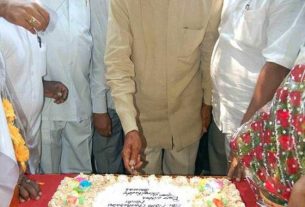Prime Minister Dr Manmohan Singh on Tuesday said it was time for India to usher in the second Green Revolution with a special focus on dry land agriculture and small and marginal farmers.
Inaugurating the 93rd Indian Science Congress at the Acharya N G Ranga Agricultural University Thursday morning, the prime minister recalled that the National Commission on Farmers headed by the architect of India’s first Green Revolution Dr M S Swaminathan, had suggested a programme for agricultural renewal.
The five components suggested by the commission included soil health enhancement, water harvesting and sustainable and equitable use of water, access to affordable credit and crop and life insurance reform, development and dissemination of appropriate technologies and improved opportunities, infrastructure and regulations for marketing of produce.
Also from the Indian Science Congress
Prof C N R Rao gets first India Science Award
Dr Singh suggested two more elements to this package: application of science and biotechnology to the improvement of seeds and utilisation of herbal and other plants and the application of science to animal husbandry to improve productivity of livestock and poultry.
“There is much that science and technology can do in each of these seven areas. There is much that agricultural universities can in fact do in each of these areas. The second Green Revolution will not be possible without a rejuvenation of our agricultural universities and research institutions. We have to revitalise these institutions,” he observed.
The prime minister said that the technologies we develop must be economically affordable and relevant to small and marginal farmers, especially in drought-prone regions.
He major criticism against the first Green Revolution in the country 40 years ago was that it did not benefit dry land agriculture and it was not scale neutral and had benefited large farms and big farmers.
“While evidence shows that this was not always the case, we must ensure that the second Green Revolution technologies have a special focus on dry land agriculture and benefit small and marginal farmers,” he noted.
Referring to the theme of the Indian Science Congress, that is, role of science and technology in the promotion of integrated rural development, Dr Singh said that science and technology must address three major challenges to promote rural development.
“First, we have to increase agricultural productivity– the productivity of land, labour, seed and plant and other factors of production. Second, we have to develop affordable and appropriate technologies for energy and water. Third, we have to promote labour-using, yet efficient and relevant technologies in both farm and non-farm business,” he explained.
India, he said, also needed increased application of science and modern technology to forest conservation and management, environmental protection, water conservation and utilisation of herbs and plants. “We need a harmonious blend of advanced science and technology, appropriate technology and local knowledge to ensure an equitable distribution of the benefits of new knowledge,” he added.
Recalling the initiatives taken by the government in watershed development and ground water replenishment, he said that in some regions of the country, inter-linking of rivers would contribute to reduced dependence on groundwater and to recharge the groundwater.
Seeking a more informed debate on the utilisation of river waters in a manner that would be ecologically sustainable and economically affordable, he urged the Indian Science Congress to come forward with suggestions as to how we can bring 10 million hectares of additional land under irrigation without associated environmental damage and with minimal human dislocation.
“Our government has taken several initiatives. We have launched Bharat Nirman, a time-bound programme to improve rural infrastructure, including rural roads, power, housing, telecom and irrigation. We have launched a National Rural Health Mission, enhanced funding for rural education and for the mid-day meal programme for school children. We have enacted the National Rural Employment Guarantee Act and increased availability of credit to farmers. All these initiatives are aimed at offering a new deal to rural India,” he said.
By Syed Amin Jafri


